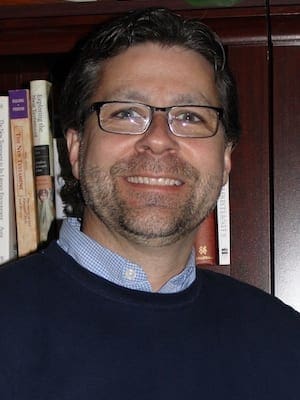A “Markan sandwich” encapsulates two of my favorite gospel healing narratives.
This “sandwich” describes a literary device used often in the Gospel of Mark in which the author tells a story that is interrupted by another story. The second story is told in its entirety, and then the first story is finished.
In Mark 5:21-24, a story about a synagogue leader named Jairus begins only to be interrupted by the story of the bleeding woman (Mark 5:25-34). The woman’s story is told in completion before the rest of Jairus’ story (Mark 5:35-43) is told.
The two stories are intertwined and each story explains and gives meaning to the other. Another well-known example is found in Mark 11:12-25.
When we read the stories in Mark 5 together, as we should, we realize that the two individuals that come to Jesus are very different.
Jairus is the man who is named and is a respected community leader who can come to Jesus publicly to seek help. The woman, who remains nameless, is a social outcast because of her disease and approaches Jesus furtively.
These stories are told together, in part, so that all of us can face the reality that no one is free from the pain of sickness and death. Illness is no respecter of persons; at some point in our lives we will all seek healing. But what is healing?
John Wesley described the intervention of sin into God’s creation as that which brought disease and death to humanity.
He preached that healing was the holistic union of a person’s body, mind and soul that returned us to the unity and peace of the original creation.
The woman who has bled for 12 years has not found healing from her disease from doctors and treatments. She was tired of living with this disease, but she was seeking something more than physical healing.
Remember, she is unnamed, signaling her perceived insignificance in society. Her physical ailment of bleeding was a social and religious stigma that caused her to be ostracized from her community.
She had no real connection to others, not much self-respect, and little, if any, control over her life.
She was not only disheartened by the physical state of her illness, she was perhaps more troubled by the mental and social state of her existence.
It may be true that she comes to Jesus primarily for physical healing – something she desperately needs, but which she had not found from other healers.
But it is conceivable that this woman approaches Jesus knowing that he can offer her more than the absence of a disease. He can offer her more than physical healing. He can give her wholeness.
The clue to Jesus’ holistic healing of this woman, which leads to her full restoration as one of God’s children, is found in the way Jesus responds to her act of faith.
When she admits she touched him, Jesus replies, “Daughter, your faith has made you well; go in peace, and be healed of your disease.”
In calling this unnamed and ostracized woman “daughter,” Jesus affirms her place in the people of Israel, as a daughter of Abraham.
No longer is she to be cut off from her community, from her connection to significant others. She is restored to her community in which she can find love, acceptance and self-worth.
Moreover, Jesus tells her that her faith has made her well. The word “well” is the word often translated as “saved.”
This reveals that the salvation of which Jesus speaks is more than the “get me to heaven salvation;” it is a holistic healing.
The same may be said for the daughter of Jairus. The death of innocence is a mockery of God’s goodness and blessing for life.
Jesus knows this, and in raising this young girl to life he is not simply restoring physical existence to her. He is affirming the goodness and blessings of life.
It should also be noted that Jesus offers no preferential treatment to Jairus. Rather, he acknowledges the dignity of every human.
In a market-driven healthcare system, Jesus would have passed by the unnamed woman and gone to assist the synagogue ruler in a home visit.
Instead, Jesus stops to recognize the stranger and outcast, not as a number among numbers, but as a person in need.
These two stories, intertwined into one narrative, tell us not only of the healing power of Jesus as a miracle worker; they also tell us what healing really is.
It is the restoration of the whole person to the full potential of God’s gift of life, in which we find purpose and meaning, loving relationships in community, and self-love and respect.
This is the kind of healing we all need.
 Drew Smith, an ordained Baptist minister, is director of international programs at Henderson State University in Arkadelphia, Arkansas. He is the author of “Reframing a Relevant Faith.” A version of this column first appeared on his blog, Wilderness Preacher, and is used with permission. You can follow him on Twitter @WildernesPreach.
Drew Smith, an ordained Baptist minister, is director of international programs at Henderson State University in Arkadelphia, Arkansas. He is the author of “Reframing a Relevant Faith.” A version of this column first appeared on his blog, Wilderness Preacher, and is used with permission. You can follow him on Twitter @WildernesPreach.
Assistant Director of the Honors College at Henderson State University in Arkadelphia, Arkansas.

